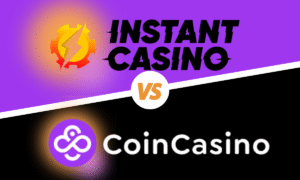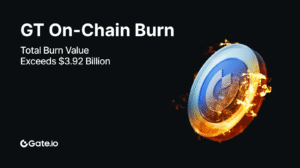Fractional ownership is a popular investment strategy for high-value assets like planes, sports automobiles, and vacation homes. The primary distinction between fractional ownership and timeshare ownership is that with fractional ownership, the investor owns a portion of the property rather than time units. If the asset value rises, so does the value of the shares in the investment with fractional ownership. It has long been used to share assets in areas such as real estate and the purchase of high-value assets. Simply described, it is an investment strategy in which the cost of an asset is distributed among individual shareholders, with income sharing, lower rates, and usage rights available to them. Whatever the case may be, when the value of an item rises, so do the ownership shares. Furthermore, a third party will usually manage the asset, oversee logistics and maintenance, and ensure that each co-owner’s rights are upheld.
A similar approach has since been extended to other items, including art. Fractionalized art sales, particularly those that use blockchain technology and NFTs to divide artwork, have become the new method of doing business in the art world. Fractional ownership follows the same reasoning as traditional ownership: numerous people own one piece of artwork and share the asset’s benefits and costs. This means that instead of selling a single piece of art to a single buyer, galleries, artists, and collectors can sell it digitally to thousands of art enthusiasts across the world. Fractional ownership of art has always existed, but it has only recently become popular due to technological improvements and society’s embrace of blockchain and NFTs.
Exposure to several asset classes is the real benefit of fractional ownership. For generations, the wealthy have been investing in art, exotic cars, and boats. These assets have a low correlation with public markets and the economy, making them excellent value preservation vehicles. People who invest in great art, real estate, and collectibles are theoretically immune to recessions, downturns, and even pandemics. Their worth is intrinsic, not based on the financial flows they will create for their owners in the future (the way stocks do). A second benefit is that having a complete collection of collectibles may provide diversification on a portfolio level but not within the asset class. Don’t put all your eggs in one basket, as the adage goes. It should be dispersed as far as possible to mitigate non-systematic risk (i.e., the risk inherent to the asset but not the market).
Fractional ownership in the art market allows everyone to engage in the art market. It will enable artists to make money consistently and through different channels. It has become a terrific tool for people just starting to collect art for financial purposes to study and comprehend the market without risking too much money. Fractional ownership allows expert collectors to diversify their portfolios without having to manage the asset.
While art is meant to be shared and meant to convey important ideas and represent various things, owning great art was once reserved for the privileged who could afford to purchase pricey works. As a result, many artworks are placed in private collections, storage units, and magnificent mansions, where they are unavailable to the general public. Everyone can now co-own art thanks to fractional ownership, significantly altering the traditional art industry’s dynamic. Art with sentimental and monetary value and a potentially lucrative life on the market has become marketable security, allowing groups of people to co-own what was previously exclusively available to the wealthy, thanks to technology.
For assets with a single owner, the benefits of NFTs are apparent and obvious; however, these benefits do not translate well to assets with community ownership, such as a shared piece of real land. Some argue that groups of people might theoretically hold most assets and that the lack of practical frameworks for establishing and managing community ownership is the main reason we haven’t seen such a trend.
This is where fractional ownership enters the picture, claiming its place as the next step in the growth of crypto, art, and asset ownership. Fractional ownership has additional advantages in terms of increased democratization and lowering exclusionary barriers, as it allows a large number of people to share ownership of a single asset. When you add in the ability for owners to participate in asset governance, you have a new community ownership model that gives part-owners a fractional ownership interest and involves them in asset management decisions.
As a result, tokenized fractional ownership models allow distributed community asset ownership by exploiting open networks for asset creation, trade, and governance. Fractional ownership’s adoption and execution across the industry would go a long way toward democratizing the art world and bringing it within reach of the broadest possible audience. If this widespread adoption occurs, there’s no doubt that future generations will credit the art world’s evolution to the NFT revolution; NFTs paved the way for fractional ownership by causing a paradigm shift in how people think about what constitutes a work of art and as a result, both NFTs and the fractional ownership concept can be regarded as instrumental in shaping both.
Before dismissing the concept of fractional ownership and art tokenization completely, there are a few things to consider. To begin, purchasing art tokens is reasonably similar to purchasing stock. The concept of art tokenization is not new, and it has the potential to change the way people invest in and buy art. It’s similar to buying shares in a company or any other type of business. People often expect the value of such shares to increase, allowing them to profit from their investment. For many people, fine art can be a good investment because its value improves over time. Second, as previously stated, it is ideal for those who are interested in the art industry.
Making a token that people can buy is not all that difficult. The tricky part is convincing others to purchase the token and use the platform built. For people who participate in the art community regularly, investment in art tokens makes sense. Also, they are more eager to join if the platform partners with artists they care about and love following. People will simply not care if it does not. Those interested in art and a working knowledge of the industry will select appropriate coins for their portfolio. Even if they don’t, people can try out the concept with artworks rather than ICOs because they both require a risk tolerance and a basic comprehension of who and what they’re investing in.
Last but not least, investors aren’t the only ones who benefit from tokenization. It has the potential to increase investment opportunities for both industry players and artists. Rather than taking out high-interest loans, museums and other organizations can now sell shares in artworks they already own and use the proceeds to expand their collections even further. Second, artists can use the funds to crowdfund their projects, sell shares in prospective works of art, and potentially increase the value of their work through word-of-mouth marketing and trade.
In an attempt to help artists through the NFT process and set themselves apart from those currently in the market for digital artists, NFT holders, content creators, legacy art galleries, and crypto investors; Fraktal is a company that allows many owners to center around a single NFT, enabling crowdfunding for small and established artists and assets, rather than solely focusing on singular ownership. Rather than only allowing the more financially rich to own a high-value NFT, Fraktal’s mission is to put crypto art investment in the hands of everyone. While some other projects and companies are working on similar decentralized applications (DAPPS), Fraktal is the first platform for shared ownership. It enables fractional ownership of NFTs by using smart contracts on Ethereum, where a DAO Marketplace supports the community.
Join the Fraktal community and share the future of art by clicking here for more information.







More Stories
What elements make Dragon Pool will become a “craze” in the NFT Game industry.
Jada Finance establishes AI in the finance and crypto spheres with a new crypto ecosystem
Does it make Sense to Share and Store Data with Blockchain? With KRYPTOX it does.